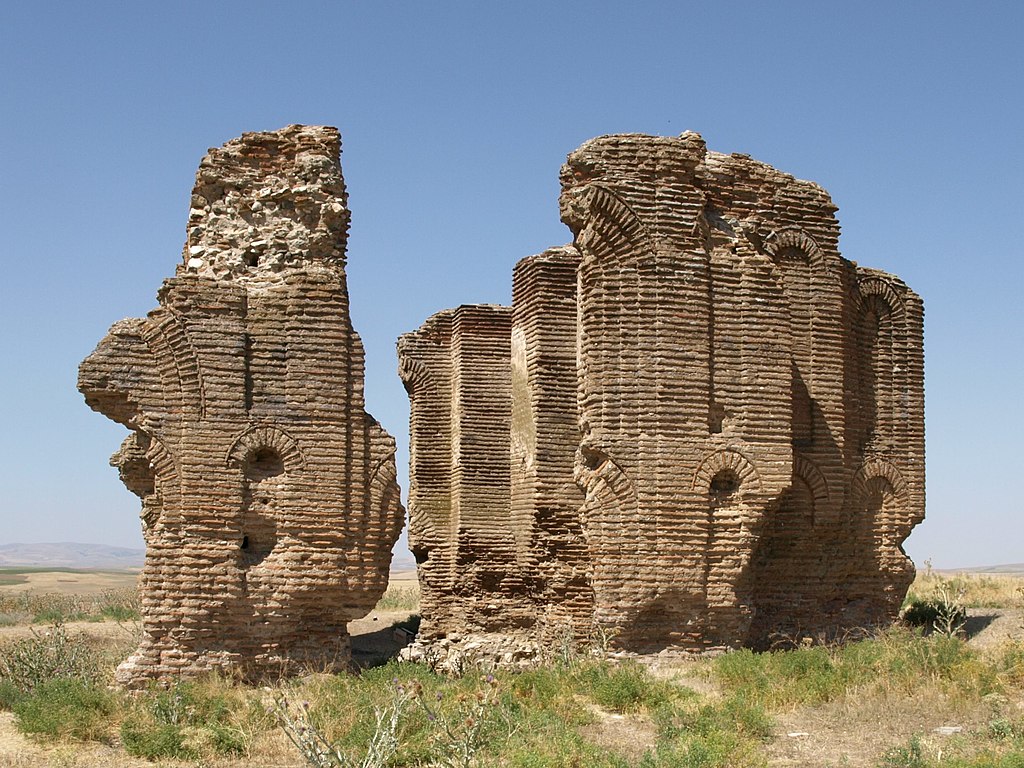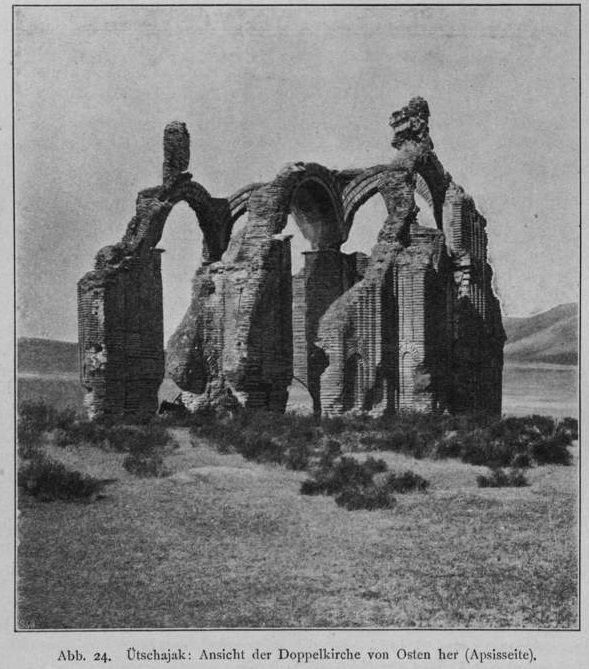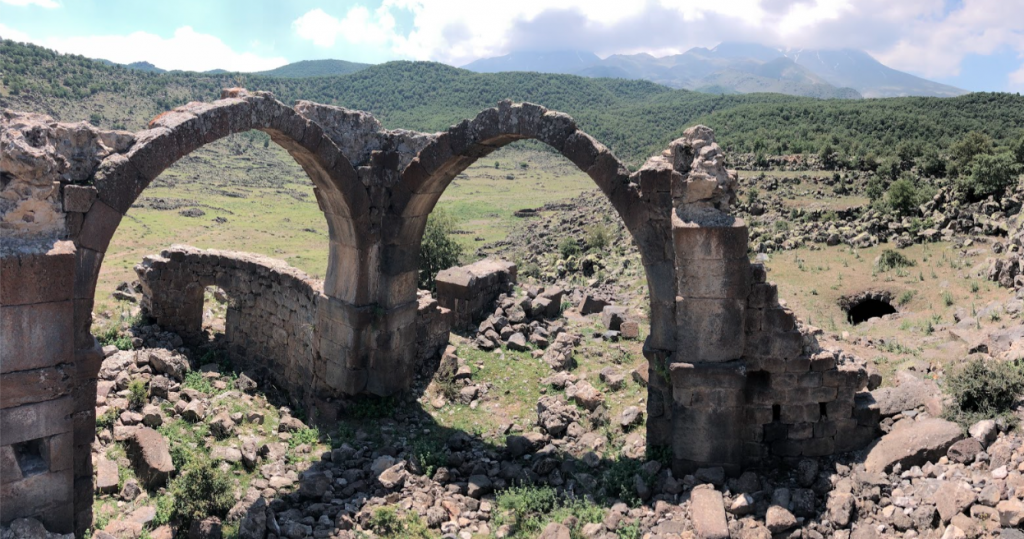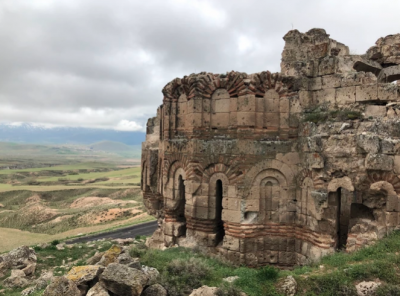
Administration
After the reorganization of the Ottoman provinces in the 19th century and the dissolution of the Eyâlet Anadolu, Kırşehir was the center of a sancak attached to the Eyâlet/Vilâyet Ankara (Angora) or Bozok. The capital of this province alternated between Ankara and Yozgat, whose territory bore the old name Bozok.
Toponym
The Turkish toponym ‘Kır Şehri’ means ‘steppe’ or ‘prairie city’. In the past Kırşehir was identified with the early Byzantine city Mokisos (also Mokissos or Mokessos) in southwestern Cappadocia, which probably is identical with Viranşehir (Trk.: ruined city) about 35 km south of modern Aksaray. The identification with the Roman Aquae Saravenae made instead is also claimed for a field of ruins near Terzilli Hamam (today Sarıkaya) in Yozgat province.
Armenian Population
“Wedged between the districts of Angora and Kayseri, the sancak of Kırşehir had only two localities with substantial Armenian populations – the prefecture, Kırşehir, with a population of 7,150, and to the north, Keskin, the principal town of the kaza of Denek Maden, with a population of 2,650.”[1] The Armenians of this sancak possessed two churches and four schools with an enrolment of 900 pupils.[2]

History
The history of Kırşehir dates back to the Hittites. During this period, the basin of Kırşehir was known as the country of ‘Ahiyuva’, or the “Land of the ‘Achaeans’”, as the Greeks were known to the Hittites. This basin also took the name Cappadocia at the time of the Romans and Byzantines.
In 1071, the Byzantine Empire’s dominion over Inner Anatolia ended and Kırşehir came under the control of Turkish rulers.
Until the conquest of the Danishmenden Emirate by the Rumseljuks, suzerainty over Kırşehir was disputed and alternated between these two Turkic dynasties. After the end of the Rumseljuk Empire in 1307, the city came under the direct rule of the Mongol Ilkhans, who maintained a mint there. From the mid-13th to the mid-14th century, the city was an important cultural center in Anatolia. After the end of the Ilkhanate in 1335, the city came under the rule of changing Turkish dynasties. After Kırşehir first came under Ottoman rule under Sultan Bayezit I until the Battle of Ankara in 1402, the city was finally incorporated into the Ottoman Empire by Sultan Selim I.

Destruction
“In June and July [1915], Armenian homes were searched, but the authorities found no trace of arms or ‘revolutionaries’. They proceeded to arrest from 15 to 17 young men nonetheless. Guarded by Ahmed Çavuş [sergeant], the men were sent to face court-martial in Angora [Ankara], because every Saturday they had collected alms for the poor that were suspected of having been used for revolutionary purposes. When they arrived in Gülhisar, these young men were stripped of their belongings and slaughtered. The victims of the next stage of the operation were 14 notables from the city who were deported to Arpaçuhu, where they were slain by the head of the recruitment office, Muncur Sadir Bey. There followed a new wave of arrests: sixty-five adults were taken into custody and then massacred by the çetes [irregulars] Şakir Receb [Recep] and Hasan Çavuş. The last group to be apprehended (135 males) was taken under guard 20 minutes outside the city to a place called Gülhisar, near Muncur, and were liquidated by çetes with the assistance of Turkish locals from a nearby village.
In Kırşehir, the mutesarif then had the girls and women transferred to the town barracks, while the children were conducted an hour’s march from the city and left in the middle of a field to starve to death. The authorities first sealed the Armenians’ homes, after which officials and notables plundered homes and stores and divided up the booty among themselves, leaving objects without value to the committee responsible for liquidating ‘abandoned property.’ According to survivors, the girls and women confined in the barracks were told that they would have to convert if they wanted to escape with their lives. The pressure was the greater in that thousands of villagers from the vicinity had come to town to ‘acquire women’. But after the women and girls had pooled all their jewels and handed them over to the local Union and Progress club, they were granted a reprieve. Seventeen adolescent boys between the ages of 15 and 19 who were still in the town were rounded up on the orders of the leaders of the Union Club, which suggested that they also convert. After firmly refusing, they were conducted to Çallıgedik, where they were put to death by Şakir Recep and his çetes. By the time these operations had been terminated, the only Armenians left in Kırşehir were five or six families of artisans who had converted and a few other women. (…)
In Keskin, events unfolded in much the same way. The kaymakam, Talat Bey, distributed weapons to the Turkish villagers in the vicinity so that they would be prepared to carry out a massacre. (…) One week later, Talat Bey (…) proceeded to make mass arrests: four hundred eighty men were imprisoned in a han, while the local populace was invited to pillage the Armenian quarter. The first convoy, comprising 130 men, was then put on the road (…). The massacres themselves were perpetrated by çetes (…).”[3]
